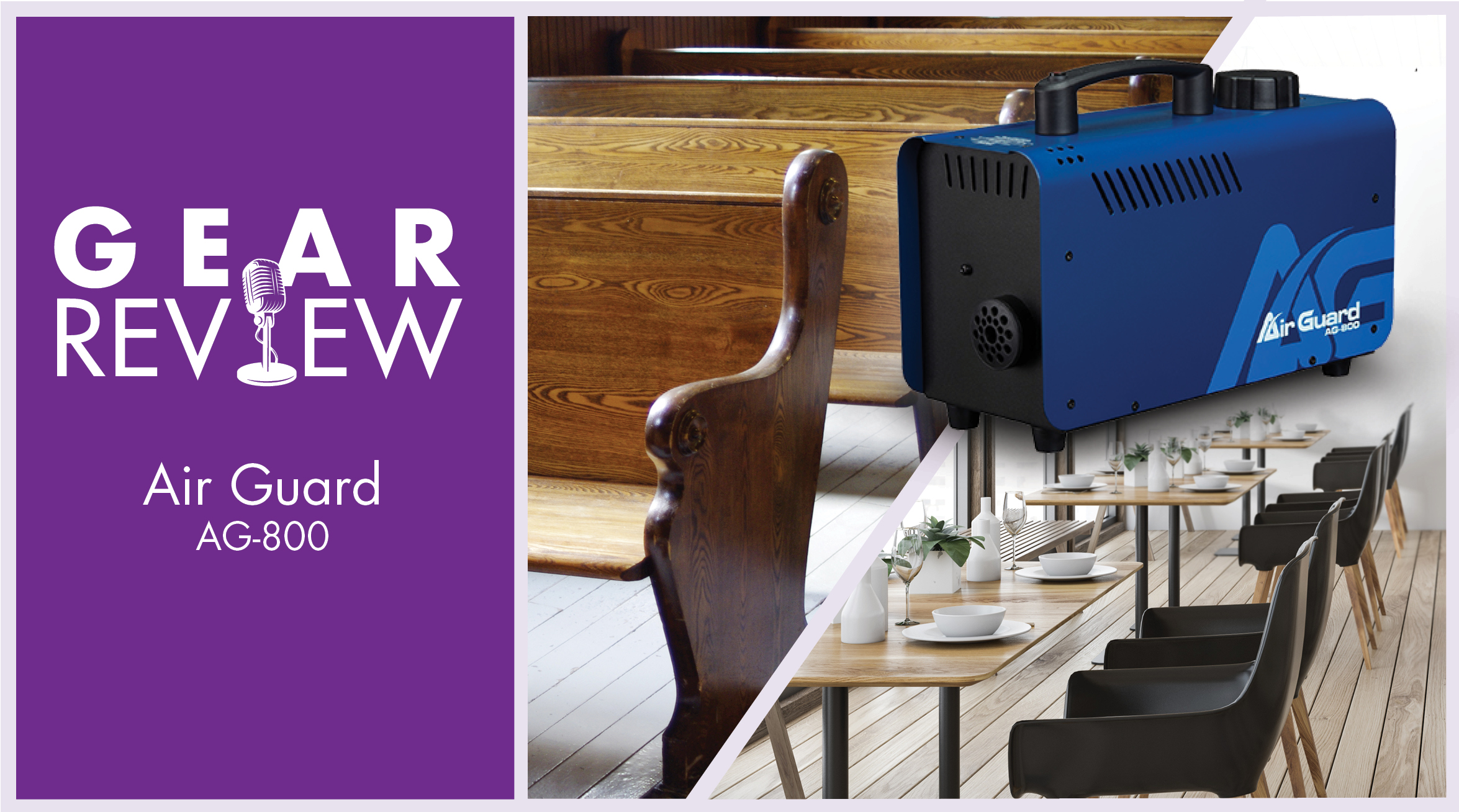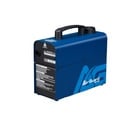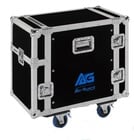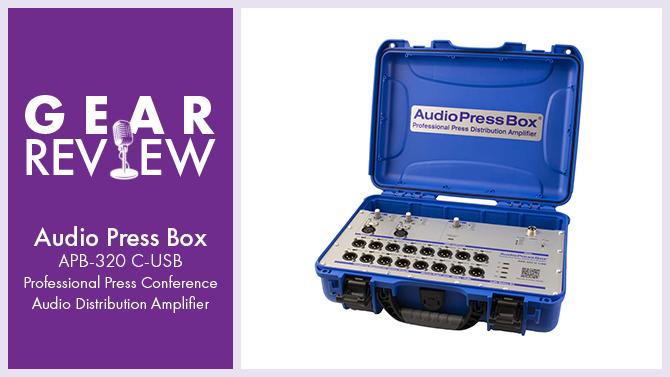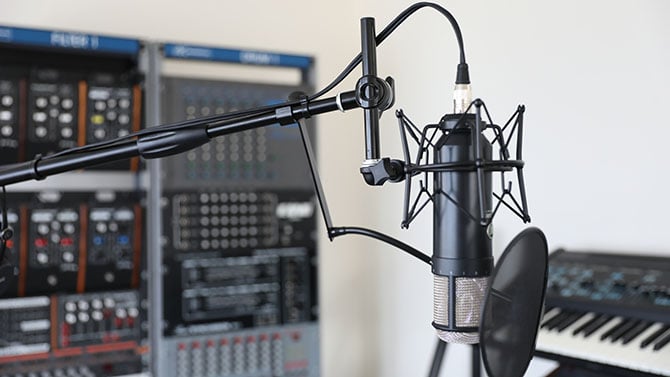Apple’s Steve Jobs was quoted as saying, “Creativity is just connecting things. When you ask creative people how they did something, they feel a little guilty because they didn’t really do it, they just saw something. It seemed obvious to them after a while.”
So when Full Compass asked if I wanted to review an antibacterial/anti-COVID-19 product from Antari, a Taiwanese maker of entertainment products like fog generators, hazers, snow effect generators, bubble machines, and the like, I was intrigued. The fact that someone made a connection between spreading fog to fill a room and spreading an antibacterial fog to sanitize spaces seemed ingenious—but what would it be like in use?
Meet the Family
The Air Guard product line has four different models. The AG-800 sent for review is self-contained and compact (12.5” x 9” x 5”, which also includes the handle and rubber feet). The line also includes the AG-20, a portable, battery-powered unit for spaces like school buses, and two larger units (AG-1500 and AG-3000) for larger areas like houses of worship, warehouses, restaurants, and gyms.
Note that these draw a fair amount of current. The AG-800, AG-1500, and AG-3000 require 800W, 1450W, and 1600W respectively. These units should be plugged into a suitable, grounded electrical outlet—not at the end of an extension cord (the AG-20 uses a 12V battery and requires 600W). Warm-up time varies with the size, from 2 minutes for the AG-800 to 8 minutes with the AG-3000. The AG-20 is basically instant-on.
Similarly to a conventional fogger, you fill an Air Guard with antibacterial fluid (more on this later), turn it on, and the “fog” fills a space for five minutes, after which the unit turns off automatically. You can also turn it off manually. The Air Guards are a bit different from conventional foggers because the liquid needs to be heated to a higher temperature, but the technology is basically the same. Note that you can use smaller units in bigger spaces, but then you need to leave them on longer, and move them around for uniform dispersion.
Fogging with the FLE fluid lays down a protective antibacterial layer, like what you get with other antibacterial solutions. The company claims this will last up to two weeks in a fully enclosed inner space with low visitor flow rate, assuming the protective layer hasn’t been wiped off. I could easily see shop owners fogging up their places of business regularly.
About the Fluid
Air Guard’s main antibacterial fluid is designated FLE, whose active ingredient (Thymol, derived from the oils of various herb including thyme) has been approved by the EPA to kill Coronavirus. Thymol is pretty innocuous; it’s included in multiple consumer products, like toothpaste, mouthwash, cleaning sprays, disinfecting concentrates, and pesticides. It’s considered non-toxic and safe for food surfaces. In 2009, the EPA decided that “thymol has minimal potential toxicity and poses minimal risk.”
Of course, I’m no medical professional, nor am I offering advice concerning health, or vouching for the efficacy of the testing done to these units by various agencies. However, reviewing any product in a meaningful way requires using it under real-world conditions, so I spent a considerable amount of time on the web researching what I was about to spread in my home. This included papers from the EPA and the British Pharmacological Society Journal, and furthermore, since Thymol is also used as a pesticide, I looked up detailed toxicity information on the PAN Definition:
Definition:
Horizontal pivot of a camera or light, opposite of Tilt, or the placement of a sound element in stereo or surround sound. Pesticides Database Definition:
Definition:
1. A collection of computer data that relates to a specific topic or topics (e.g., the presets included in a synthesizer). 2. A program for managing a collection of computer data generally relating to a specific topic or topics, and usually allows for extensive cross-referencing.. Thymol is not listed as a carcinogen, acute hazard, endocrine disruptor, or anything else significant. (Interestingly, I found that one of its main uses is to help keep bees alive by removing bacteria from apiaries.)
If I grow another head next month I’ll write a follow-up, but it sure seems like Thymol—which has been in common use in various products for decades—is considered benign by people who know a lot more about this kind of thing than I do. A welcome bonus is that compared to the stench of bleach, FLE has a pleasant, woody scent.
In Use
It’s quite simple. The company specs a bottle as being able to provide 100 thirty-second shots, so that works out to ten five-minute treatments. (Triggering a 30-second blast is good for fogging a car, or an additional space like a side room or walk-in closet.)
After filling the tank, it takes a couple minutes for the unit to warm up. Once it’s warmed up, as confirmed by an LED Definition:
Definition:
LED (Light-Emitting Diode): A semiconductor light generator used in displays, television, pointers and for general illumination. It is a low-power replacement for incandescent lamps., you push a button and the fog begins. I figured it’s safest not to inhale any fog, no matter how harmless it is in theory, so I appreciated the included wireless remote Definition:
Definition:
A broadcast from the field, not from the studio. A Remote Control. control that lets you trigger the unit from a different room, or on the way out the door. Note that the unit does make some noise; it’s not silent. I would put it in the same general noise category, or maybe a bit less, as a microwave oven but with a more “mechanical” sound.
Air Guard recommends turning on HVAC or fans to increase airflow, which has the side benefit of cleaning bacteria in air ducts. (I wonder if removing an HVAC’s air filter, and sending a 30-second blast into the ductwork, might be a good idea.) The company also recommends not entering a room until 30 minutes after it’s been fogged, so after turning on the device, I left the house to take a 45-minute walk.
Note that although Air Guard lays down an antibacterial layer, it doesn’t leave something like a greasy residue. It’s more like if you did a thin spray of isopropyl alcohol; you can’t really tell it’s there, and it becomes less noticeable over time. The company advises turning on a unit only as long as needed to fill a particular size space, which is listed in their documentation (e.g., five minutes of AG-800 fogging fills 3,500 cubic feet; five minutes with the AG-3000 handles 45,500 cubic feet). Using more fog than is needed won’t harm anything, but wastes fluid.
The one important caution is the possibility of the fog triggering a smoke alarm system. If it connects to an automatic sprinkler system, you might want to turn it off before proceeding. (I took the batteries out of my alarms before going for a walk, because I figured I wouldn’t be there to hear them anyway.) The other caution is that the Air Guard machines have been optimized exclusively for the antibacterial fluid. When life gets back to normal, don’t think your Air Guard can pull double-duty as a fog machine Definition:
Definition:
A device that heats and sprays a fluid to create a fog or smoke effect. at DJ Definition:
Definition:
DJ (Disk Jockey):
1. Traditionally applied to people who played recorded music on the radio or at events. 2. Artists who perform using any combination of pre-recorded music, samples, turntables, and musical instruments. gigs.
Is It Worth It?
Even before the pandemic hit, there were good reasons to keep mold, fungi, bacteria, and the like out of your life. But now, the bar has been raised. As more offices and shops re-open (for better or for worse), “business as usual” is anything but usual. Of course, a sanitizer can only do so much; if someone infected with COVID-19 sneezes in your face, having sanitary surfaces won’t help—but when the droplets hit the ground, those sanitized surfaces will help the next person. When I see images of people scrubbing Definition:
Definition:
Scanning back and forth over a digital audio or video recording, or moving tape back and forth, to find a particular point within the recording or tape. down airplanes and restaurants with sanitizers, I can’t help but think something like the AG-800 is a simpler solution.
But one thing’s for sure: If I owned a shop, I would not be returning the AG-800 demo unit to the manufacturer, but sending in a check to cover its $349 price tag. In the fight against a life-threatening disease, I’ll take any advantage I can get—and a fogger like the AG-800 sure beats rubbing everything down with sanitizing wipes and sprays.



